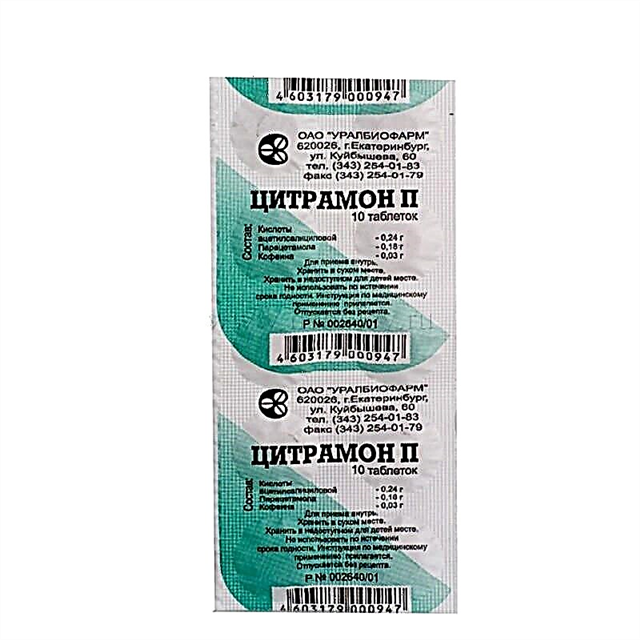The kid grows up and makes his mother more and more happy. The time for the introduction of complementary foods is approaching, and questions arise: when can you give the yolk to a child, from what month and in what form? Many grandmothers advise to introduce it as early as possible, talk about the benefits and value of the product. Is it true that experts think about it?

Baby eating yolk
The benefits of egg yolks for babies
Egg yolk, like other foods, has a specific composition, nutritional value and benefits. The study of the components of the product will answer the question of why introduce yolk into complementary foods.
Composition and nutritional value
The egg is composed of white and yolk. Children under one year old can only be given yolk, babies at this age hardly digest protein. Composition and useful properties:
- Vitamin A. Helps develop vision, strengthens immunity, stimulates bone formation.
- Vitamins of group B. Improve brain function, normalize metabolism, the amount of glucose in the blood.
- Vitamin D. Contains a large amount, affects the formation of bones and skeleton, acts as a prophylaxis for rickets. There are practically no products with its content. The human body synthesizes it independently from the sun's rays.
- Vitamin E. Prevents the development of anemia, helps to heal wounds on the body, is partially responsible for tissue regeneration.
- Vitamin K. It is contained in small quantities and is rarely found in foods. Responsible for blood clotting, helps to form bones and skeleton.
Important! In no case should you give raw yolk to children.
All vitamins are listed above, in addition to this, there are trace elements in the yolk:
- potassium;
- magnesium;
- calcium;
- selenium;
- iron;
- chlorine;
- sulfur;
- phosphorus;
- sodium.
The total amount of minerals is 2 g of the total yolk. This is not as small as it really seems. Daily use of yolk strengthens the child's body, increases immunity. In addition, it is quite high in calories. 100 g of yolk contains:
- proteins - 16 g;
- carbohydrates - 1 g;
- fat - 32 g.
Total calories are 352. Children's daily allowance is 800 kcal per day. 1 yolk eaten by a child will be ¼ of the norm.
Excipients in the composition:
- Lecithin. It performs a transport function, transfers vitamins to the organs, helps to form liver cells and neurons.
- Cholesterol. In childhood, it is very important, participates in the production of sex hormones.
- Carotene. Responsible for good eyesight in the baby.
In childhood, the baby will not receive much harm from the eaten yolk. The main thing is to comply with all the rules, norms and restrictions in nutrition. Egg products are strictly prohibited for newborns.
Important! It is best to give the yolk every 2-3 days or combine it with other foods.

The child opened his mouth in front of a spoon
How to choose the right one
When parents begin to introduce a new product into the diet, the questions arise: which is better to buy, from whom is it better to buy? This also applies to eggs. It is known that quail or chicken eggs can be given to children. They are most often found on store shelves.
Home or industrial
Many people think that homemade eggs are definitely better. This, of course, is true, but there are several nuances. Chickens must undergo veterinary control, and their care must be of high quality. If there are chickens in the house, and the parents are sure that the birds are healthy, then why not? If you buy eggs from your hands, then it is better to think about it, says Dr. Komarovsky.
Chickens sometimes get sick with salmonellosis. It is a disease that affects not only birds, but also humans. Causes infection with severe fever, complicated by diarrhea and abdominal pain. Sick children are isolated in boxes and treated with strong antibiotics.
Industrial eggs are rigorously processed. Shop workers follow the chickens according to specific instructions. Before being released for sale, the entire batch undergoes a certain test. Take random samples and examine them on site. If there are deviations from the norm, the entire batch is destroyed.

Boy eats an egg on the table
Chicken or quail
Increasingly, pediatricians are giving preference to quail eggs. There are several reasons for this:
- these birds do not get sick with salmonella;
- eggs are hypoallergenic;
- contain more useful trace elements;
- small size;
- also available as chicken.
However, the parents make the leading decision. Quail eggs are not found everywhere. It is unprofitable to keep such birds at home, as they are small in size and give small eggs.
Important! Quail eggs are sold freely in any supermarket or store. If you set a goal, then finding them is not difficult.
From how many months are introduced into complementary foods
The yolk is enriched with a large amount of vitamins and minerals, but for a child's stomach it is high in calories. Breastfed babies are not able to digest the product easily and quickly, since they do not yet know how to produce the necessary enzymes. There are certain norms when you can give the yolk to a child.
How to properly introduce the yolk into complementary foods? Pediatricians recommend introducing the egg into complementary foods starting at 8-9 months. By this time, the baby has already tried various types of meat and fish, his body will get used to digest proteins and fats.
It is also not worth delaying with a new product in the diet - the child's stomach must get used to digesting various components. The yolk is a heavy food, but healthy.
Many grandmothers say that they fed their children with eggs from 3-4 months. It may be so, but the time and conditions of residence were somewhat different. Currently, pediatricians do not welcome this type of nutrition.

Baby and eggs
Cooking rules for babies
There is nothing special about making eggs for children. Prepare them step by step:
- Pour water into a saucepan, preferably from a filter.
- Eggs are immersed in it, so that they are completely under water.
- A pinch of salt is added to make the shell easier to come off.
- Cook over medium heat for 15 minutes.
- Drain the boiling water and fill it with cold water.
- Leave to cool for 30 minutes.
- Peel the egg.
- Cut the white slightly and release the yolk.
Then break it on a plate and add it to a children's dish. The new product is introduced in very small portions. The yolk is very healthy, but it is an allergen and can cause an inappropriate reaction in a child.
On the first day, the baby is allowed to taste a few grains. The baby's reaction is monitored, if there is no redness, rashes, edema and other changes, then the administration can be continued. If the crumbs have spots, itching, swelling of the limbs, then you need to postpone the acquaintance with the new product for a couple of months.
On the second day, give 1 g of yolk to taste. Monitor manifestations. On the third day - 5 g of yolk, on the fourth - half. They continue to give half the yolk a day. The whole yolk of the crumb will hardly digest, so it is better not to give the product in large quantities.
Yolk administration scheme for a week
| Day of week | Quantity, g. |
|---|---|
| Monday | Several grains |
| Tuesday | 1 |
| Wednesday | 5 |
| Thursday | 10 |
| Friday | 15 |
| Saturday | 20 |
| Sunday | 20 |
It's best to stick to this pattern. It provides exact values. You can use a kitchen scale to measure your portion accurately. If the baby eats a couple of grams more, nothing bad will happen.
Important! It is impossible to give a large portion of the product at a time; it is better to divide it several times.

Mom feeds the baby
Can I combine
When complementary foods are introduced, the first week has passed after meeting the yolk, then it can be added a little to any dishes. You can cook:
- Egg soup. Any soup that the crumb loves is prepared, a little egg is added to it.
- Chop in yolk batter. Pieces of meat or chicken are cut. Separate the yolk and white. Beat the yellow part with a whisk. The meat is dipped in batter and doused in flour. Fried in a little vegetable oil. Can be cut into small pieces for baby.
- Meat puree with yolk mass. If the baby loves canned meat, you can add a little yolk to them.
- Vegetable puree is mixed with crushed yolk. Mix well so as not to get large lumps.
Doctors see nothing wrong with combining eggs and other foods. If the little one likes the product, then why not mix it with other favorite dishes?
Important! It is better not to give pure yolk in large quantities to the crumbs, so as not to create problems with digestion.
Rates of yolk complementary foods by month
How to properly give yolk to a 7 or 8 month old baby? Yolk complementary foods for babies with breastfeeding and artificial are slightly different. The most optimal age of introduction for children is 8-9 months. Pediatricians identify their own norms:
- artificial feeding - from 7 months;
- breastfeeding - from 8 months.
Until this age, the child should not be given yolk. First, the toddler should try meat and fish products, vegetables, fruits and juice. Only then are the eggs introduced.

The crumb eats from a spoon
How often to give
It is recommended to give egg products to children no more than 2-3 times a week. Food is considered heavy and contains a lot of cholesterol. He participates in the formation of hormones. Excess of it accumulates on the walls of blood vessels, and atherosclerosis develops in the future. It is better to restrict babies from such consequences.
Number
How to give yolk to a child is described above, how much is an interesting question. For a 7 month old baby, this is a heavy meal. To digest the product, the baby's body must produce a large number of enzymes. The digestive system is not always ready for this.
Undigested yolk particles are excreted in the feces, which can lead to stomach problems. According to pediatricians, the optimal amount of yolk at a time for a baby is 25-30 g. At the same time, it can be given every other day in that amount or every day for 10-15 g. After one year, the baby is quite capable of digesting a whole egg. On average, its weight is 50-70 g. This meal is suitable for a full breakfast.
Important! Do not neglect the advice of doctors, an increase in the portion can negatively affect children's health.
Possible problems from the yolk in complementary foods
How to give yolk to a baby is understandable, but what health problems can arise? The egg is considered an allergen, so it is administered with caution. Many babies have allergic reactions and digestive problems.

Cut egg
Signs of allergies
In infants, yolk allergy most often manifests itself in the form of a rash or diathesis. Types of allergies, its signs:
- Hives. Numerous rashes appear on the body. They have a red or pink tint and cause itching. There are also more severe liquid bubbles. Are of a local character.
- Diathesis. Similar to hives, it appears all over the body. The spots are red, large, itchy. Dry and peel off gradually.
- Quincke's edema. It is rare, occurs immediately after the absorption of allergens through the intestines. It manifests itself in the form of swelling of the limbs, face and respiratory organs. It is required to introduce an antihistamine, to stop using the yolk as soon as possible.
- Anaphylactic shock. This is a rare inadequate reaction of the body. It occurs instantly, immediately after contact with the allergen. Shock is dangerous, fatal happens. In this case, you need to call an ambulance as soon as possible.
If the baby shows any reaction, then the introduction of the yolk must be stopped. Acquaintance with the product is postponed for a period after one year of age. Usually doctors insure themselves and allow children prone to allergies to try eggs closer to two years.
Important! If an allergy occurs, the baby should be given antihistamine baby drops.
Bowel problems
Not all children are ready to digest the yolk, it is high in calories. Sometimes bowel problems occur. Signs of manifestation:
- Constipation. The intestine does not produce the necessary enzymes for digestion; particles of undigested yolk are found in the feces. It appears in a short period of time.
- Increased gas formation. Babies under one year old are prone to colic, any new product can cause such a reaction. Usually nothing happens from a couple of crumbs, from a large number at a time this can happen. The baby needs to be given medicine for colic.
In such cases, it is recommended to stop consuming egg products and postpone acquaintance with them for a couple of months. The child is growing every day. Changes occur daily in his body. The older the baby is, the more adapted he is to new foods and the environment.
From how many months yolk is allowed for babies, depends on the characteristics of its development. Usually, pediatricians at the reception themselves offer to introduce the yolk into complementary foods, if they believe that the baby is ready. If there is a desire to acquaint the child with a new product, it is better to consult a local doctor. As a rule, babies are ready to digest and assimilate yolk complementary foods from 7-9 months.



